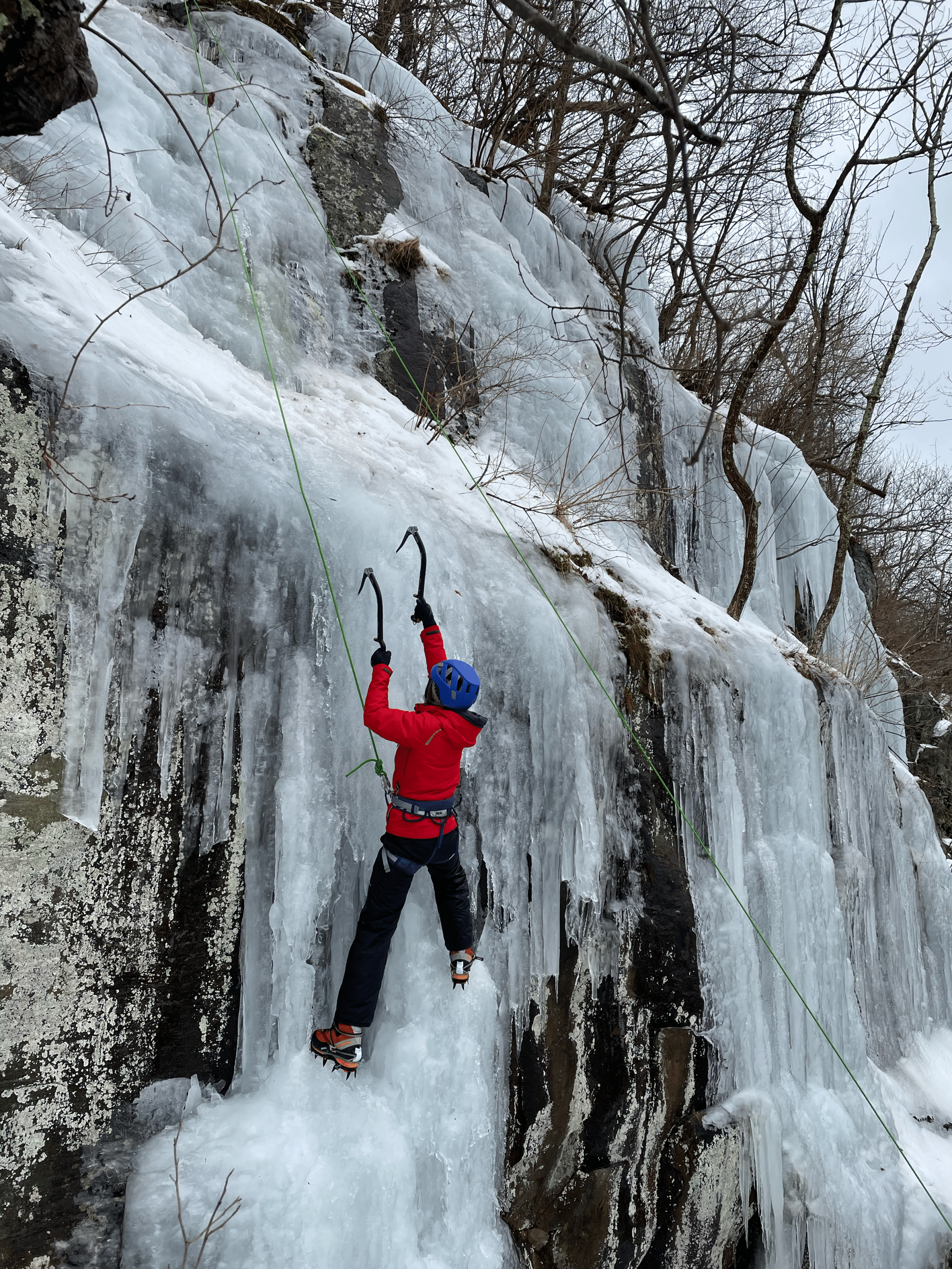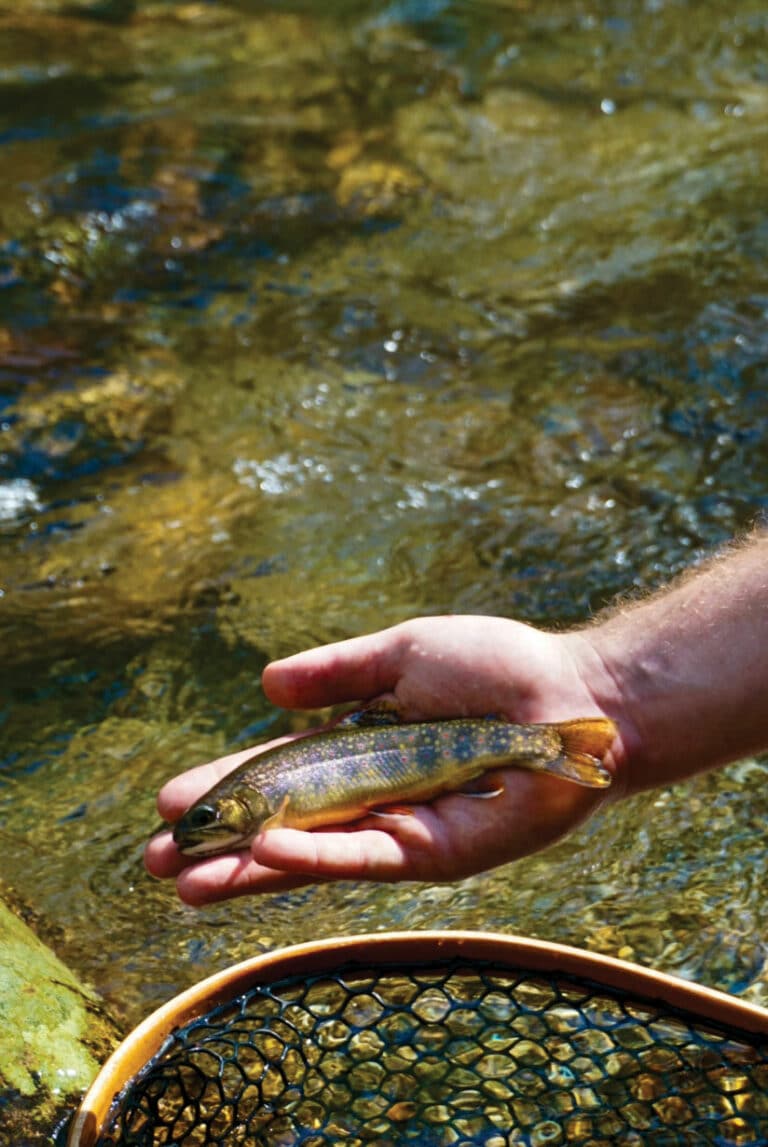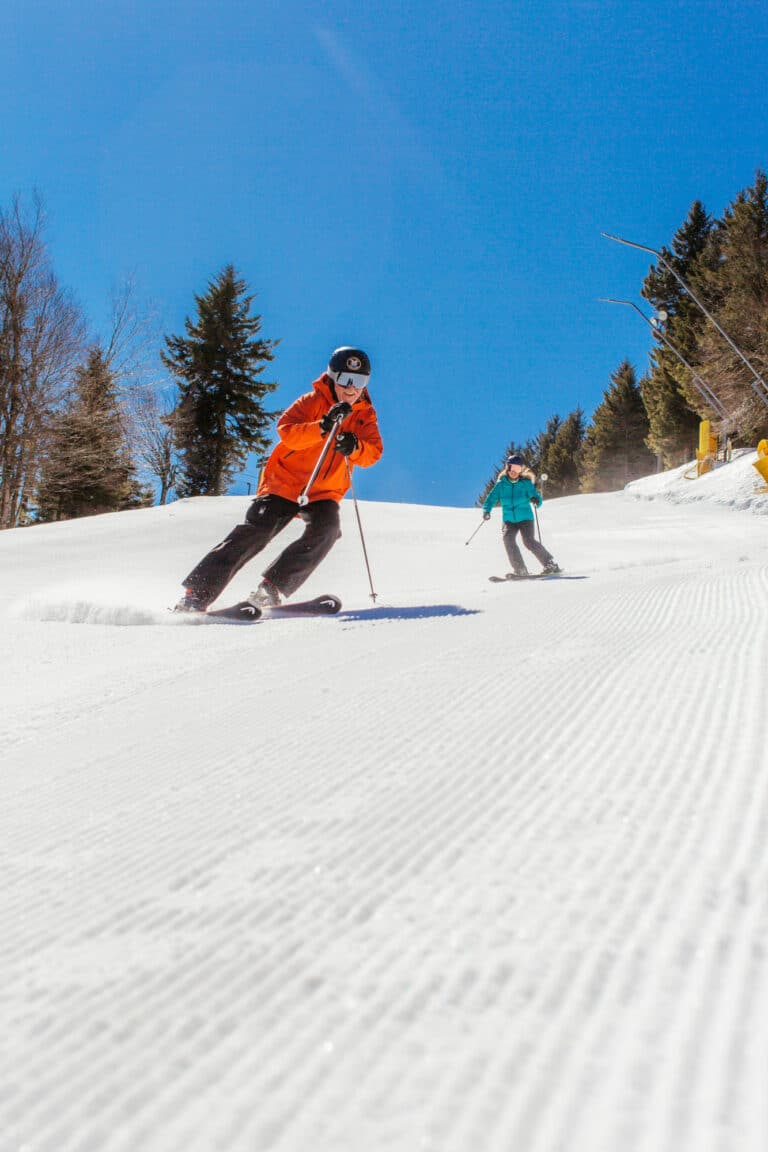You should probably hire a guide, especially in the South.
In recent years, Blue Ridge winters have been pretty mild. The lack of cold has been a sore spot for the region’s ice climbers, who must chase ideal conditions for successful days on frozen crags.
“There’s not an abundance of ice to be climbed,” says Grant Price, a Charlottesville-based climber and the head guide for Blue Ridge Mountain Guides, an AMGA Rock Instructor and SPI Provider.
For novice climbers ready to ascend some ice, hiring a guide is likely the best way to get into the sport, especially for those hesitant about the risks and weather conditions in the mountains. Price helped us breakdown why.
Guides Can Help Determine Where and When to Ice Climb
In places like Virginia’s Blue Ridge Mountains, winter temperatures can be inconsistent, which makes it difficult to predict ideal ice climbing conditions. Ice is typically prime after temperatures have been below freezing for five days, and if isn’t just right, crags can become dangerous for inexperienced climbers. Climbing guides scout the best spots and are trained to mitigate risk.
“One of the big facets of trying to go ice climbing in the South is just knowing where the ice is—and knowing whether or not it’s in,” explains Price. “Sometimes it comes in for a day and a half, and sometimes you get a few weeks.”
While climbers can explore potential ice climbing crags on their own, a guide service typically provides a faster entry point into the sport. With Blue Ridge Mountain Guides, Price takes climbers on ice crags just off the Blue Ridge Parkway, near Wintergreen, Va., in an area that saw temperatures rise into the mid 60s this past winter.
“Ice climbing is very condition dependent,” Price says. “There are very specific areas.”
Guided Trips Typically Come with Free Gear Rentals
Going guided can save new ice climbers cash on expensive equipment, since most trips come with rental gear. A basic ice climbing setup costs about $2,000, including ice tools, a harness, crampons, a helmet, and a pack. Those who are uncertain about their commitment to ice climbing in the Blue Ridge Mountains will likely flinch at such a significant cost.
“There is quite a bit of financial investment in ice climbing,” Price says. “Working with a guide is likely going to give you access to fleet gear so you can rent gear and try it out before making an investment.”
Guides Share What They Know
Because ice crags are few and far between in the South, many experienced climbers are tight-lipped about their favorite spots.
As Price puts it: “A lot of people have put in quite a bit of time and effort to find places to climb. And they tend to not be as forthcoming about those.”
With limited beta available, guided trips are likely the most reliable and safest options for new adventurers looking to try a sport with increasingly infrequent opportunities in the region.
“There aren’t really that many people that are going out ice climbing (here),” Price says.
Cover Photo by Ellen Kanzinger








